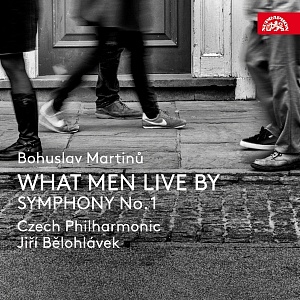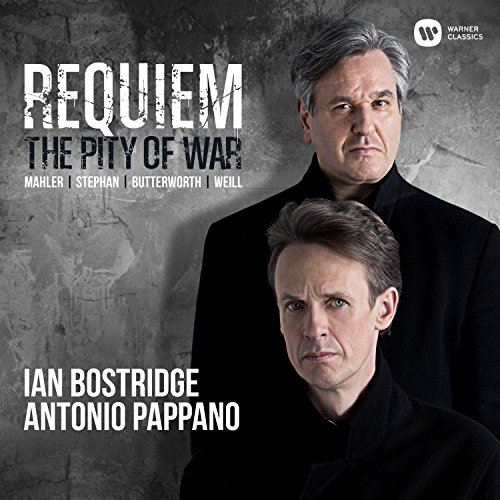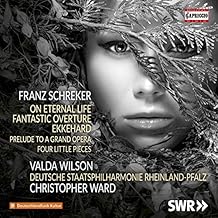An extremely fine performance of Jeux, Roth and Les Siècles playing with the tightly-focused poise this piece needs in order to capture the energy of strategy and exchange. In Jeux the game is, ostensibly, tennis. Or is it ? Two young people are fooling around, but suddenly a ball is thrown onto the court, changing the game. Strange, quivering chords, suggesting tension. Rays of brightness, throwing the darkness into menacing contrast. In musical
terms, this means constant flow between points, patterns crossing and recrossing, staccato contrasting with freewheeling liveliness. Like
Boulez, Roth marks the sense of "listening". The players on this court have to be alert and reespond. Perhaps the wild, tantalizing line represents the mysterious ball. Whatever, it has energy and purpose,
unlike the players when they came onto court. At last a blaze of horns and rising energy in the music. Are they players being "illuminated" ? Suddenly, tantalizingly, the music ends. Instead of closure in the conventional symphonic sense we're left to think for ourselves. I love Jeux because it's open ended and "modern". There may be dangers ahead, the understated wit in the piece suggests adventure, not doom. This performance is good because Les Siècles is grounded in the fundamentals of the baroque, where dance underpinned music : thus the importance of clarity, precision and physical energy.
In the Nocturnes, Debussy seems to illustrate a seascape. The movements have programmatic titles - Nuages, Fêtes, Sirènes - but as always, good music is more than literal depiction. Waves keep changing shape and position, thus the concept of constant change, figures moving and shifting in myriad ways. In an ocean, motion is controlled by invisible forces, like tides and wind. Thus the concept of musical form which might suggest undercurrents and ideas behind surface appearance. Roth and Les Siècles shape the first two Nocturnes emphasizing the intricate detail beneath the broad sweep, for these details are like the "brushstrokes" in painting. But it is in the third Nocturne, Sirènes, where Debussy breaks in even more innovative form. The women of Les Cris de Paris, vocalize, singing abstract sound instead of words. The shifting patterns, nuances and tones create the concept of a horizon that keeps moving and changing, with infinite variety. From these wonderful cross-currents and multiple textures, the borders of tonality are beginning to fade.
Though we hear it so often, it's bracing to remember that Prélude à l'après-midi d'un faune broke new ground in 1889. Informed by a century of pschological insight, we can interpret the meaning of the central image. The fawn is a wild creature who acts on instinct, defying social restriction. Through symbolism Mallarmé could express emotions too dangerous to be openly expressed. Prélude à l'après-midi d'un faune grows from a tradition of allegory that goes back to the Greeks. Debussy's music defies categories. Its chromatics stretch tonality, at once rich, yet clean and pure. Think of fin de siècle art with its curving forms, representing an aesthetic of freedom. Like the fawn, the flute line moves and turns senusously, explicitly erotic. In Vienna, Freud had yet to formulate his ideas on dreams and the subconscious. In the French-speaking world, the symbolists (as early as Baudelaire) were already there. François-Xavier Roth and Les Siècles bring out the fundamental purity in the piece. Much of the beauty of the piece lies in its mysterious ambiguity and the multi-level interaction between the flute and lower-voiced winds, strings and harps. The flute represents Pan, the fawn his disciple. This in itself is symbolic, for in ancient Arcadia, lone musicians sing in landscapes where the rules of society do not apply. Here, the flute stood out, highly individual, enhanced by but not overpowered by the luxuriant background, lush strings and resonant winds. Roth and Les Siècles are aware of the "classical" as well as modern allusions in this remarkable work : the horns are natural, gently muffled as if heard from a distance. An important reminder that the fawn will be hunted down and killed. Prélude à l'après-midi d'un faune is not at all "romantic" Beneath the exotic surface lurks danger. The Prélude lends itself to dance because it flows gracefully, yet is also lucidly disciplined : keynotes of French style since Lully and Rameau.
Please also see my review of François-Xavier Roth and Les Siècles in Ravel for Harmonia Mundi. and Pablo Heradas Casado Debussy with a Le Martyre de saint Sébastien but where Prélude à l'après-midi d'un faune is nowhere near as well performed as on this new Roth/Les Siècles disc.














